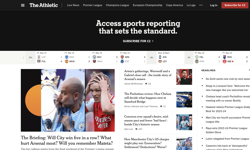The internet as an advertising medium has countless unique selling points, but two absolute killers are of course its accountability and the array of methods to tailor messages to specific audiences. Accountability is well documented in a positive way, but targeting online, while much talked about, has never been celebrated in quite the same way – until now.
Growth in display
Targeting is one of the key drivers for growth in online display advertising, and we’re still seeing continued increases in investment. Following a small decline in 2009 at the heart of the recession, online display bounced back with an above-forecast increase of 6.4% to £381 million and a 19.3% share of the internet medium in H1 2010 (IAB / PwC AdSpend 2010).
Types of online targeting
In terms of use, all types are commonly used and this will continue in future. As Roger Williams, international marketing director for targeting network Audience Science puts it, targeting should be seen as a suite of options to fit any marketing objective, often used in conjunction to achieve the desired effect. A publisher that can offer variety of targeting products is likely to have the upper hand.
The most common forms of online targeting include:
* Demographic: targeting exact audiences based on data like age, sex, location.
* Content: placing ads next to specific web pages to associate your brand with it, for instance on well known publications like FT.com and the Guardian.
* Contextual: dynamic advertising that changes with the context of an internet session, eg. showing adverts based on and related to a search term or the words within a page’s content.
* Profile: using data entered into a profile on a website and any additional data gathered in relation to that profile eg. Facebook profile information.
* Behavioural: matching advertising to aggregate data based on subject interest through previous activity, eg. if someone has visited a website for holidays in Rome, if behavioural advertising has been set up, they may see adverts related to Rome holidays at a later time.
* Remarketing: when a user is shown one advert, they can be shown another advertising message at a later time to increase impact or likelihood to respond.
Content association needs stronger justification
Associating a brand with a particular publication is a mainstay of marketing plans and a publisher’s top selling point, but in the future, it will need increased justification. The ability to target specific audiences regardless of content or publication - a huge opportunity in itself - will mean publishers must strive harder to explain the benefits to advertisers of associating their brand with a specific publication.
Data driven marketing
By collecting audience data online, it’s possible to create an infrastructure that allows marketers to deliver messages to the same audience across multiple sites, breaking down traditional boundaries. This is creating a shift in focus among advertisers to audience, led by data, rather than being led purely by the big name publishers.
Experience and improved targeting services has increased advertisers’ understanding of online data, enticing them to move beyond the restrictions of print publications. It’s a change in thinking for publishers but a huge opportunity for those who create the most appealing audience sets and can demonstrate its strengths using solid, up-to-date data. If publishers generate an audience they own, that advertisers want to buy, they can increase value and CPM rates.
Speaking with Tony Evans, MD of CrimsonTangerine, a targeting specialist, he states, “the better the targeting and the more information on audience, the more valuable a site and its users become.” It will be of increased importance to the publisher to secure ownership, prove its value and protect who uses it. “Publishers are no longer just selling ad placements, they’re selling audience for the first time” says Evans.
Dynamic content
Moving beyond advertising for a moment, another key trend in online targeting is the ability to target a publication’s content itself to the right audience. For instance, at a basic level, if you know someone enjoys entertainment more than politics, you can begin to highlight more stories from entertainment in specific areas across a website such as the homepage.
Targeting content and adverts alongside each other results in greater parity between the two, thus enhancing relevance to the user and creating a better experience. Data plays a fundamental role here too, as the publisher can look to audience behaviour to improve overall experience.
Offline audience data
An increasing trend online is the merging of offline audience data - often census, lifestyle or existing direct marketing databases - and using it for online targeting. There are many ways offline data can be linked with online data to provide a richer source of audience information, usually by matching one or more pieces of data.
The benefits to publishers can be huge as you look to supplement your own audience data with offline to create a richer asset to sell onto advertisers. In the future, companies known as data exchanges (who do exactly what the name implies!) are likely to become active in the UK market to make the sharing of data easier in a secure, legal and professional way.
It works the other way too, “advertisers can take online data to use in an offline environment too, extending its value,” explains Tony Evans.
Behavioural advertising
Behavioural advertising’s use is growing significantly and the IAB believes that behavioural advertising makes up a significant amount of today’s online display market.
The reason for its growth is simple: it delivers fantastic results because advertisers can reach a relevant audience whom they know to be interested in their brand or product. Sometimes options include an audience that is known to be in the market for buying a particular type of product.
Advertisers have been quick to see the appeal, reassured by an incredibly transparent marketplace that is keen to stress that no personal information is ever used without consent. Many large publishers have their own behavioural solutions, and a significant portion of the market works with third party ad networks to deliver the service for them.
The UK Government’s Digital Britain Report highlighted the importance of behavioural advertising as a way of turning creativity into value.
Monitoring, testing and adjusting a campaign in real-time
Online advertising allows the advertiser to see how their campaign is performing in real-time, and increasingly, to adjust the creative while the campaign is live. This is where targeting really comes into its own and a publisher that can help advertisers use both will be at a significant advantage.
By targeting various demographic sets and monitoring the data during a live campaign (or indeed afterwards for a later campaign), an advertiser can start to spot differences in performance. If they can then adjust the creative for each specific audience set, down to minor differences in demographic, the effectiveness of a campaign can be optimised. For example, a retailer like Tesco may notice different wording works better for different age groups.
Such testing of a live campaign is utterly unique to online, and it’s important to test different combinations of targeting and creative to find the right mix for the objective.
Notice, choice and education
There has been some concern about targeting in recent years, particularly around behavioural advertising practices and caused by high profile stories completely unrelated to online targeting, such as the Government losing people’s data. However, it’s important to remember that all online companies providing targeting must obey the law and in reality companies go far beyond what the law requires of them to protect user data.
Trust has very quickly returned to the advertising market, in large part to the industry’s speedy response to concerns. The IAB Behavioural Targeting Council, consisting of the biggest players in the market like Microsoft, Google, Yahoo! and AOL, has led the way with its Good Practice Principles.
The IAB’s Good Practice Principles are based upon offering users notice, choice and education. All companies have to notify their users of behavioural advertising practice, give them the choice not to receive it and to educate people on how the practice works. You can see all of this in action and learn more by visiting www.youronlinechoices.com. This is being taken to an EU level – involving a broader industry coalition – with particular focus on transparency and control.
Targeting for brand building
The online industry has built itself on accountability; as such it has been lumped as a ‘direct response’ medium. Without doubt, it is the greatest direct response medium ever known, but the internet is quickly proving its power as a branding channel too.
Online display advertising has come on leaps and bounds in recent years, and is being used increasingly for branding, with people gradually caring less about the clickthrough on such campaigns. Brand building campaigns online is the medium’s greatest opportunity, and if you take one thing away from this article, it should be that online targeting is the biggest thing to happen to brand building since its inception. Now advertisers can target brand messages at exactly the right audience, minimising waste in a way no other media can compete with.
A challenge for encouraging brand building campaigns online is to create reporting metrics that speak the same language as other media, like TV and radio. A brand manager is going to care more about long term behavioural changes like brand awareness and intent to purchase than they are clickthrough and interaction.
The biggest challenge: complexity
Categorically, the online industry’s greatest complication when it comes to targeting is complexity. Online targeting is extremely fragmented with many companies offering it in multiple different ways. “Complexity can kill an industry and currently for targeting, as an advertiser, it can be difficult to know who you turn to,” says Mr Williams.
Mr Evans sees the complexity as a benefit but warns of a related challenge; “because targeting can be so effective, so accurate and its data so deep, people can spend ages getting to grips and analysing it to see what works” he says.
For some, the world of online targeting may seem scary and complex, but we’ll see more companies coming forward to help people navigate as a result. The greater win however, must be for the industry to come together to simplify, work together and increase scale.










